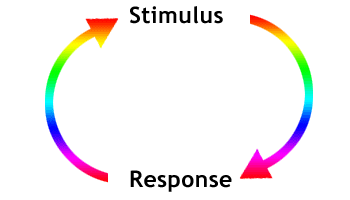Better Inventions – Leveraging Powerful Stimulus
Thank you very much for taking time out of your busy day to read this. I feel an obligation for every reader to provide you with value in return for your time.
 Overview
Overview
In a previous article, I shared with you an overview of Quantum Idea Generation 2.0. From that you learned that this creative idea generating method is a true inventing and innovation best practice. In this article, I focus on one of the four elements – stimulus – that drives the ability of Quantum Idea Generation 2.0 to consistently generate at least 12 X more ideas than brainstorming.
At my inventing company, Innovate2Grow Experts our team of Professional Inventors always uses Quantum Idea Generation to generate the ideas that help companies double their innovation success rate. We have used Quantum Idea Generation to invent well over 25,000 concepts that has produced many, many successful new products, including many that have achieved your one sales of over $100 million.
Brief History
Doug Hall of Eureka Ranch pioneered this idea generation method. Doug is an engineer by education. As a result, he loves metrics. He did lots of experimenting and measuring of idea generation results before arriving at version 1.0 of what I call Quantum Idea Generation.
Oklahoma State University conducted two paired comparison research studies. Both studies concluded that version 1.0 produced 12 X more ideas than brainstorming.
The Innovate2Grow Experts team experimented and eventually developed Quantum Idea Generation 2.0. Our experience clearly suggests that it regularly produces about 20 X more ideas than brainstorming.
The quality of ideas produced by Quantum Idea Generation is dramatically higher than brainstorming and you get ideas from this method that you would never get from brainstorming.
Stimulus: A quick story to illustrate its power
For six years, I was a professor and teaching executive in residence in the school of management at Arizona State University. In teaching upper level marketing and innovation, I used this exercise to demonstrate the power of stimulus to dramatically increase the number of ideas.
I started by asking all students to take out a piece of paper. I asked them to write down all the places they would like to go on vacation. Some of the lists included just a few places while others had almost ten places on their list of places they would like to go on vacation.
When they were done, I asked them to draw a line underneath their last entry. Then in small groups, I asked them to go to the back of the classroom with their list. In the back of the classroom, I had laid out hundreds of travel brochures.
I asked them to review the travel brochures and add any additional places to their list of places they would like to go on vacation to. Students always did a very good job of perusing the travel brochures – it was fun to imagine going to some of these wonderful vacation spots.
When they got back to their seats, I asked them to add up the number of places that were on their list before going back to the room and what the new total was after they had reviewed the travel brochures.
I then conducted a broad polling of the students. Having done this for several years, I consistently found the lists at least doubled after reviewing the travel brochure stimulus and in some cases tripled or quadrupled.
The students now had first-hand knowledge how stimulus – one of the four elements of Quantum Idea Generation – powerfully increase the number of ideas.
Five Basic Types of Stimulus
Here’s a brief overview of the five basic types of stimulus that you should consider bringing into an inventing session.
- Background and grounding: it is often good to start an inventing or innovation session with a presentation on what is already known about a business or inventing need and the basis for the session’s needs and objectives.
- Broader perspective: this is a very big category of stimulus and includes some of the following topics.
- Competition: what they are doing, where they are strong/weak, recent and upcoming innovations.
- Worldwide: finding examples of what other similar businesses are doing can prompt significant new ideas.
- Megatrends: broader cultural and demographic changes relevant to the session’s needs.
- Relevant developments: whenever you have top external experts as part of an inventing session, ask them to present latest relevant developments from their perspective.
- Mind expansion: we occasionally use a series of presentations called “the world is a very different place than you think it is.” Includes developments from science, especially quantum physics. It is intended to shake up deeply entrenched views of people in the session so they can explore some even wild and wacky ideas.
- Inspiration: we have a series of presentations that inspire people to take the existing ideas – many of which may be breakthrough ideas already – and make them much bigger.
Considerations When Using Stimulus
- Keep it simple! Do not trying to fill a PowerPoint slide with as many words as possible. Stay focused on the very few major, difference making points.
- Pictures. Pictures. In most projects, visuals have great stimulus and inspiration potential. They are also very strong communicators of key information.
- Have a stimulus plan for the entire inventing session. In most cases you start with a background and grounding presentation. It then often makes sense to add a relative developments presentation or two or three. Inspiration and mind expansion presentations often come later in the session. For example, if it is a whole day session, these types of presentations are often most helpful right after lunch or in the early afternoon.
Wait! Before you go…
Choose how you want the latest innovation content delivered to you:
- Daily — RSS Feed — Email — Twitter — Facebook — Linkedin Today
- Weekly — Email Newsletter — Free Magazine — Linkedin Group
 Richard Haasnoot has spent most of his career in and around innovation – senior leader at Procter & Gamble and Gallo, professor at Arizona State University, author of six books, and a successful entrepreneur in the innovation and creativity business. He’s a regular podcaster. Check out i2ge.com and bluesagecreative.com. Follow @Innovate2Grow
Richard Haasnoot has spent most of his career in and around innovation – senior leader at Procter & Gamble and Gallo, professor at Arizona State University, author of six books, and a successful entrepreneur in the innovation and creativity business. He’s a regular podcaster. Check out i2ge.com and bluesagecreative.com. Follow @Innovate2Grow
NEVER MISS ANOTHER NEWSLETTER!
LATEST BLOGS
Three things you didn’t know about credit cards
Photo by Ales Nesetril on Unsplash Many of us use credit cards regularly. From using them for everyday purchases to…
Read MoreFive CV skills of a business-minded individual
Photo by Scott Graham on Unsplash The skills listed on a CV help employers quickly understand your suitability for a…
Read More


